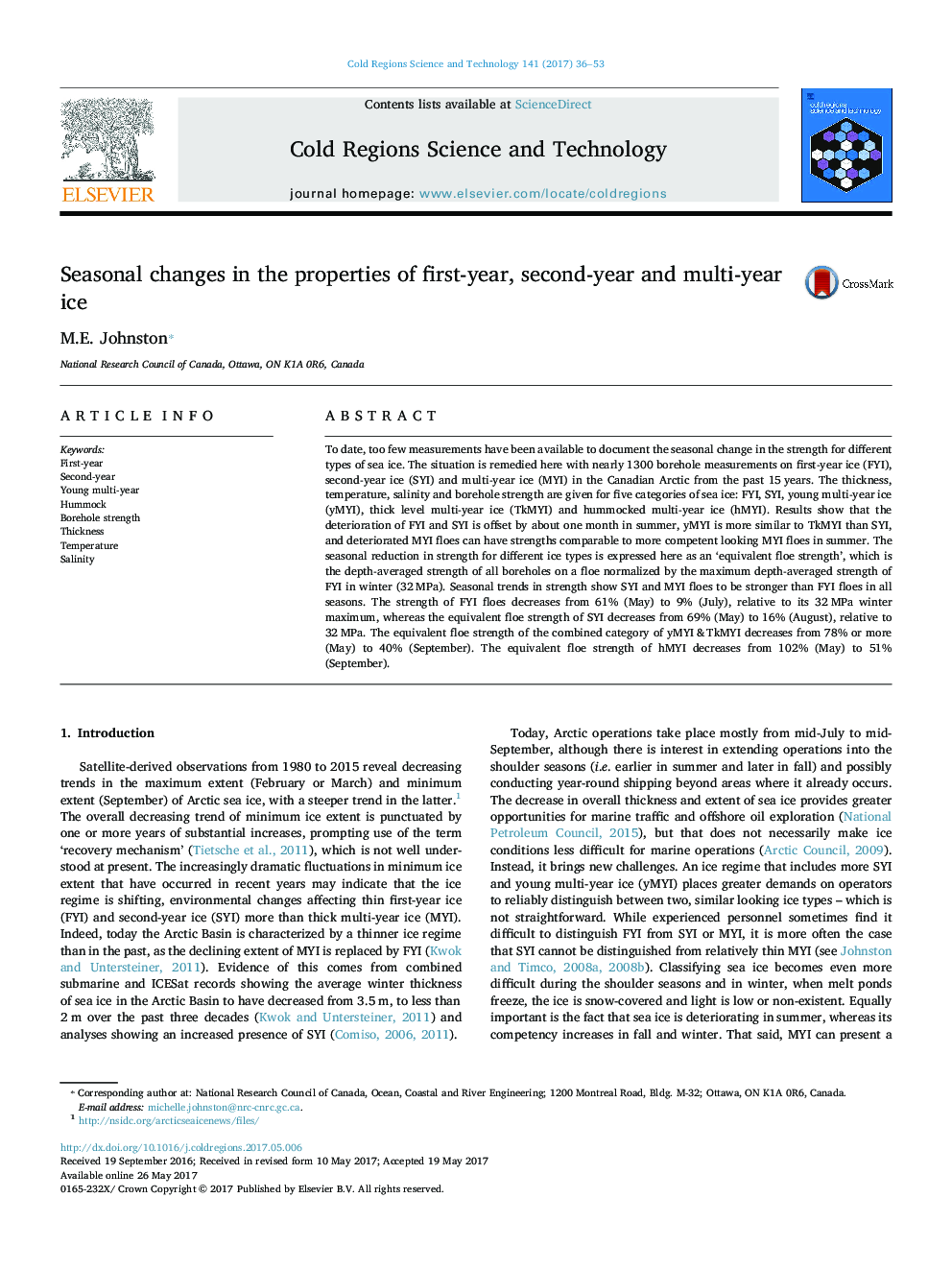| Article ID | Journal | Published Year | Pages | File Type |
|---|---|---|---|---|
| 5779356 | Cold Regions Science and Technology | 2017 | 18 Pages |
Abstract
To date, too few measurements have been available to document the seasonal change in the strength for different types of sea ice. The situation is remedied here with nearly 1300 borehole measurements on first-year ice (FYI), second-year ice (SYI) and multi-year ice (MYI) in the Canadian Arctic from the past 15Â years. The thickness, temperature, salinity and borehole strength are given for five categories of sea ice: FYI, SYI, young multi-year ice (yMYI), thick level multi-year ice (TkMYI) and hummocked multi-year ice (hMYI). Results show that the deterioration of FYI and SYI is offset by about one month in summer, yMYI is more similar to TkMYI than SYI, and deteriorated MYI floes can have strengths comparable to more competent looking MYI floes in summer. The seasonal reduction in strength for different ice types is expressed here as an 'equivalent floe strength', which is the depth-averaged strength of all boreholes on a floe normalized by the maximum depth-averaged strength of FYI in winter (32Â MPa). Seasonal trends in strength show SYI and MYI floes to be stronger than FYI floes in all seasons. The strength of FYI floes decreases from 61% (May) to 9% (July), relative to its 32Â MPa winter maximum, whereas the equivalent floe strength of SYI decreases from 69% (May) to 16% (August), relative to 32Â MPa. The equivalent floe strength of the combined category of yMYI & TkMYI decreases from 78% or more (May) to 40% (September). The equivalent floe strength of hMYI decreases from 102% (May) to 51% (September).
Keywords
Related Topics
Physical Sciences and Engineering
Earth and Planetary Sciences
Earth and Planetary Sciences (General)
Authors
M.E. Johnston,
